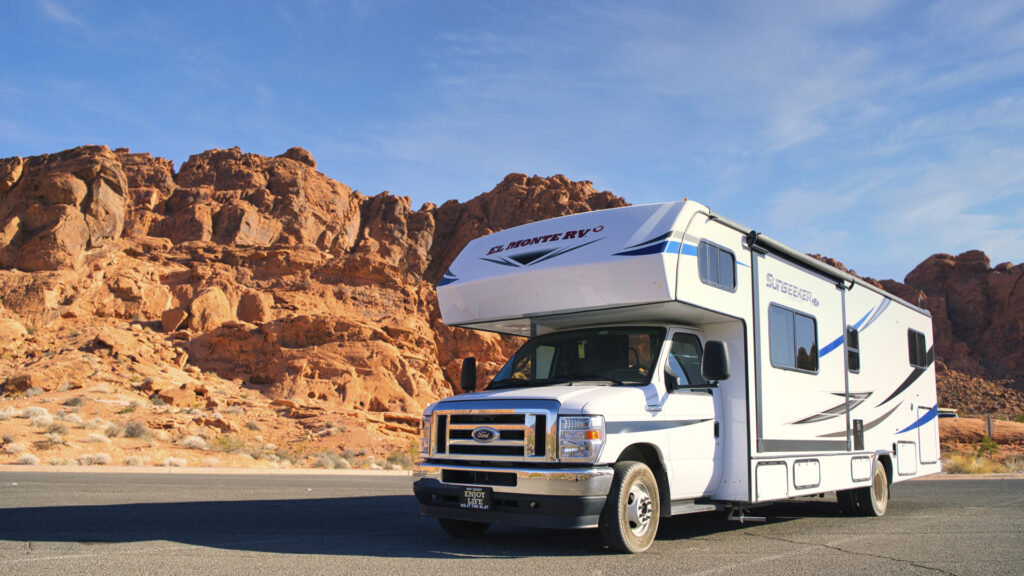
RV Water Capacity: How Many Gallons Does an RV Hold?
Table of contents
Understanding how much water your RV can hold is crucial for planning a successful and comfortable road trip. Whether you’re going on a weekend getaway or an extended vacation, managing water consumption is essential to ensuring you have enough fresh water for drinking, cooking, and cleaning, as well as a system in place for disposing of wastewater. Knowing how many gallons an RV holds can help you better plan your water usage and determine how long you can stay off the grid. Water management is one of the most important aspects of RV travel. The amount of water your RV can hold impacts trip duration, comfort, and overall convenience. It can also influence the types of RV parks or campgrounds you choose. RV water capacity varies depending on the type, size, and design of the vehicle, and understanding the three main water tanks in your RV—fresh, gray, and black—is key to efficient water management. This guide will help you understand the typical RV holding tank sizes, including how many gallons an RV holds, how much water a camper holds, and how to use these systems effectively while you’re on the road.
Understanding RV Water Systems
Every RV is equipped with three main water tanks, each serving a specific function:
1. Fresh Water Tank
The fresh water tank holds potable water for drinking, cooking, bathing, and other essential tasks. This is the water that you use when you’re boondocking (camping without hookups) or in any situation where you don’t have access to external water sources.
2. Gray Water Tank
The gray water tank collects water that has been used in the kitchen sink, shower, and bathroom sink. While this water is not contaminated with waste, it still needs to be disposed of properly at an RV dump station.
3. Black Water Tank
The black water tank holds waste from the RV’s toilet. It’s important to monitor this tank and empty it when it’s full to avoid unpleasant odors and potential system malfunctions.
Each of these systems is interconnected, with the fresh water tank supplying water to the other two systems. Understanding how much water your RV holds, the typical RV holding tank size, how these tanks work, and how quickly they fill up with different activities is vital for efficient water management during your trip.
Fresh Water Tank Capacities by RV Type

The size of the fresh water tank in your RV depends largely on the type and class of RV you own. Let’s break down the typical fresh water tank sizes for different RV types:
Class A Motorhomes
Class A motorhomes are the largest and often the most luxurious RVs on the road. These vehicles are equipped with spacious living quarters, and their typical RV holding tank size includes fresh water tanks that range from 75-100 gallons. Some high-end Class A motorhomes may even have larger tanks. This is especially useful for long trips or extended stays in remote locations. On average, the fresh water supply in a Class A motorhome can last anywhere from 5 to 7 days for two people, depending on usage.
Class B Motorhomes (Camper Vans)
Class B motorhomes, also known as camper vans, are the smallest type of motorized RVs. As such, they come with smaller fresh water tanks, typically ranging from 20-40 gallons. Due to the compact design of these vehicles, the water tank size is limited, which means Class B owners must be more mindful of their water usage. While this limited capacity might require more frequent refills, it also means the vehicle is lighter and more fuel-efficient.
Class C Motorhomes
Class C motorhomes fall in the middle range in terms of size and water capacity. They usually feature fresh water tanks between 35-60 gallons. These RVs are great for families or smaller groups, offering more space than Class B vehicles while still maintaining a manageable size. A typical fresh water supply in a Class C motorhome can last 4-6 days, depending on usage. Wondering how much water a camper holds? Class C motorhomes provide a balanced water capacity for comfortable travel.
Travel Trailers
Travel trailers, which are towed by another vehicle, come in a variety of sizes, and so do their fresh water tanks. Smaller travel trailers might only have 20-40 gallons of fresh water capacity, while larger models can have up to 80 gallons. So, how much water does a camper hold? Travel trailers generally rely on the tow vehicle for power and water, but their water capacities can vary significantly based on size and model.
Fifth Wheels
Fifth wheels are large, luxurious towable RVs that often offer more generous fresh water capacities. These RVs typically hold between 50-100 gallons of fresh water. The larger size and advanced design of fifth wheels allow for larger tanks while still maintaining the vehicle’s stability on the road. With a fifth wheel, you can expect longer trips and more independence from water hookups.
Gray and Black Water Tank Capacities

Understanding the capacity of your gray and black water tanks is just as important as knowing your fresh water tank size. While fresh water consumption is a priority for RVers, gray and black water management also plays a crucial role in trip planning.
Gray Water Tank
The gray water tank typically holds between 40-65 gallons of used water, depending on the RV type. Gray water comes from sinks, showers, and dishwashing, so it can accumulate faster than black water. It’s essential to monitor the gray water tank closely, especially when camping off-grid, as it can fill up quickly, limiting your ability to use the sinks or showers.
Black Water Tank
Black water tanks are smaller than gray water tanks, usually ranging from 18-45 gallons. The capacity of the black water tank depends on the size of the RV and the number of occupants. A typical black water tank can last for 2-4 days, depending on usage. It’s crucial to keep track of the black tank’s capacity and empty it regularly to avoid overflow or unpleasant odors.
Factors Affecting Water Consumption in RVs
Several factors influence how much water your RV holds and how quickly it is consumed. Here are a few common activities and their impact on water usage:
Shower Usage
A typical RV shower uses between 2-5 gallons per minute. Taking longer showers or frequent showers can quickly deplete your fresh water supply. To extend the life of your water tank, consider using water-saving techniques like navy showers (turning off the water while lathering), using low-flow showerheads, or setting a timer for showers.
Toilet Flushing
Each flush of an RV toilet uses between 0.5-1.5 gallons of water. While this is relatively efficient compared to household toilets, frequent flushing can still add up. To conserve water, some RVers opt for more water-efficient toilets or practice techniques like holding off on flushing until necessary.
Dishwashing and Kitchen Use
Dishwashing and food preparation can be major sources of water consumption. Consider using one bowl for washing and another for rinsing to reduce water use, or wash dishes at campground facilities when available. Avoid letting the water run while washing hands or dishes to conserve water in your fresh water tank.
Extending Your Water Supply: Conservation Tips

If you’re planning a longer trip or will be off-grid for a while, conserving water is essential to extending your fresh water supply, especially when considering how much water a camper holds. Here are some practical tips:
- Use campground water when available.
- Collect and reuse water when possible, such as using dishwashing water for flushing the toilet.
- Install water-saving fixtures like low-flow showerheads and faucet aerators.
- Use a portable water filter to ensure access to clean water when refilling.
- Practice water-saving techniques like navy showers and turning off the water while brushing teeth.
Water Weight Considerations for RVers
Water weighs approximately 8.3 pounds per gallon, and carrying a full tank of water adds significant weight to your RV. This weight impacts your towing capacity, fuel efficiency, and vehicle handling. For instance, if your RV has a 100-gallon fresh water tank, you could be carrying up to 830 pounds of water, which will affect fuel consumption and performance.
When planning your trip, consider whether you need to travel with full water tanks or if it’s better to fill up along the way. If you’re staying at a campground with water hookups, you might choose to travel with a partially filled tank to reduce weight. Always make sure your RV’s weight distribution is balanced to ensure safe handling on the road. Additionally, keep in mind how much water a camper holds, as this can affect your water management strategy and overall trip planning.
Protect Your Water Tanks & Plumbing with Custom Skirting – Invest in Year-Round Comfort!
As you plan your RV water storage and usage, don’t forget about protecting your plumbing and tanks from the elements. Investing in custom skirting for your RV is a smart way to keep your water systems safe from freezing temperatures. Our custom-tailored RV skirting ensures a perfect fit, providing exceptional insulation that protects your plumbing, water tanks, and undercarriage from snow, wind, and cold weather.
With over a decade of testing across some of the harshest winters, our “No-Snap, No-Gap” channel system is designed to keep your RV cozy and operational no matter the season. Ready to enhance your RV with the nation’s #1 skirting solution?
Get Custom Skirting today and enjoy a worry-free adventure—no matter where you park!
